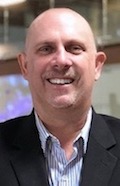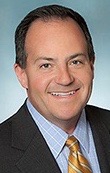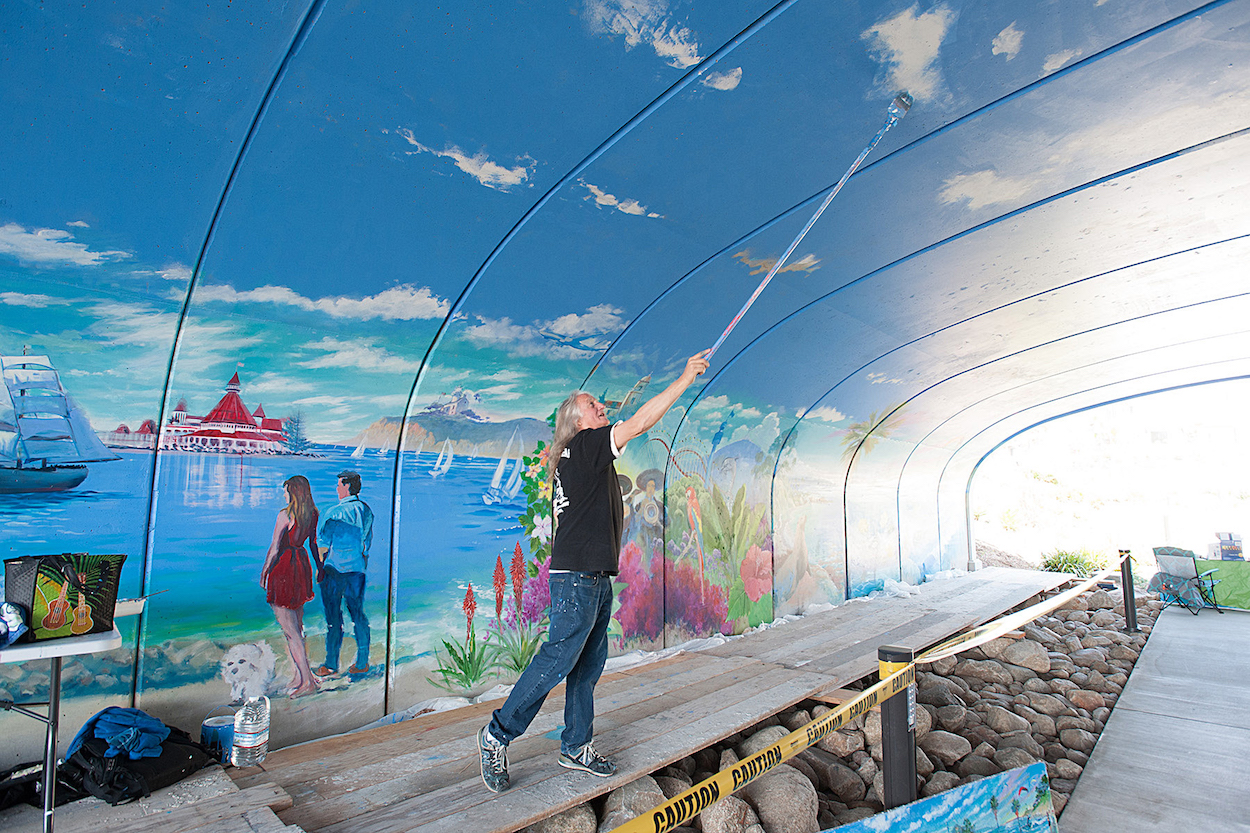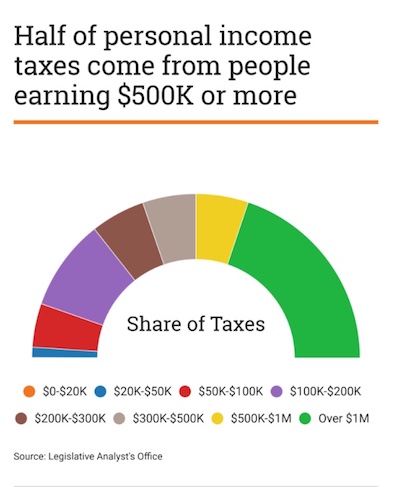Daily Business Report-May 16, 2018
Chart by CALmatters
Taxing California: Highest
in the Nation and Unstable Too
By Judy Lin | CALmatters
California’s major revenue sources have shifted over time. Until 1995, the biggest was property taxes. Today, it’s personal income taxes.
And California ranks fairly high in overall taxation: 10th highest both per capita and as a percentage of personal income, based on the latest available data from the U.S. Census.
In 2015, state and local governments collected $228.7 billion in taxes, including property, sales, personal and corporate income levies and a few others, according to the census. That’s in a state with more than 39 million residents and personal income worth nearly $2 trillion that year.
California’s taxes have risen in ranking partly because of voter-approved increases. In November 2012, the state passed a temporary hikein sales taxes of 0.25 percent and raised personal income taxes on the rich. Four years later, voters extended the income tax increasefor 12 more years.
Gov. Brown and lawmakers also approved a 12-cent gas-taxhike in 2017 to help raise $5 billion a year for aging infrastructure. The measure includes increasing the annual vehicle fee between $25 and $175, depending on the vehicle’s value.
Of course, there’s some variation:
- California has the highest statewide sales tax rate, at 7.25 percent, and is ranked ninth by the Tax Foundation in combined state and local sales tax rates.
- The state has the highest personal income tax rate for its wealthiest. It’s 9.3 percent for those making $53,000 to $269,000 and 13.3 percent for those making $1 million or more.
- California has below-average property taxes due to Proposition 13, the famous 1978 measure that capped increases to no more than 2 percent a year. The Tax Foundation ranked California 35th in the nation in taxing owner-occupied housing.
In its willingness to tax the rich, the state has become more reliant than ever on personal income taxes. Individual wages and business income as a measure of the overall economy aren’t terribly volatile. But California’s income taxes are over five times more volatile than personal income because they also include investment gains, according to the Legislative Analyst’s Office. The state taxes capital gains, partnership income and dividends, interest and rent — areas where the highest-income taxpayers derive most of their money. The result? Millionaires and billionaires contribute a disproportionate share of tax revenue — so much so that the top 1 percent of taxpayers now generate half of personal income tax receipts.
According to the Legislative Analyst’s Office, half of the state’s personal income tax revenue comes from those making $500,000 or more. Conversely, households making $50,000 or less make up nearly 60 percent of tax filings but make up just 2 percent of revenue. This volatility can mean huge cash infusions in good times. For example, when Facebook went public in 2012, top employees such as company founder and chief executive Mark Zuckerberg, along with early investors, plumped state coffers with an estimated $2.5 billion, which arguably prevented some school funding cuts amid a $16 billion budget deficit.
The opposite is true in bad times. During the Great Recession, the state faced multiple years of multi-billion-dollar deficits, including a shortfall of $39.5 billion in 2009, as fallout from the housing and economic crisis. The California Teachers Association estimates 30,000 teachers were laid off during the recession. When the state ran low on cash in 2009, it issued IOUs, mostly to taxpayers waiting for their tax refunds. The state cut benefits for the poor, such as dental coverage for those on Medi-Cal. And state workers, along with many local government employees, were forced to take furloughs, hitting working-class families.
The tech sector has an outsized influence on California’s tax volatility. According to the legislative analyst, the nine counties that make up the San Francisco Bay Area contribute 40 percent of personal income taxes but are home to only 20 percent of the state’s population. That marks Silicon Valley’s largest share since 2000. It’s why California budget watchers pay attention to stock-market gyrations. When the Dow experienced two 1,000-point plunges in one week in February, it triggered anxiety over state revenue.
There’s a saying that when Wall Street catches a cold, California gets the flu.
CALmatters.org is a nonprofit, nonpartisan media venture explaining California policies andpolitics.This reporting project was produced in partnership with the Ravitch Fiscal Reporting Programat the CUNY Graduate School of Journalism.
__________________
Illumina Acquires Edico Genome
GenomeWeb
Illlumina said it has acquired data analysis firm Edico Genome. Edico markets its DRAGEN platform, which uses field programmable gate array technology in combination with proprietary software algorithms to reduce data footprint and enable faster speeds. Users can run DRAGEN on site, in the cloud or in a hybrid mode, and can use a variety of different cloud storage solutions and analysis pipelines.
“Our acquisition of Edico Genome is a big step toward realizing the vision of reducing sequencing data acquisition and analysis to a push-button, standardized process,” said Susan Tousi, senior vice president of product development at Illumina.
Edico President and CEO Pieter van Rooyen added, “As the scale of sequencing expands, decreasing the cost and time of analysis will be important to fuel the clinical adoption of sequencing.”
Stephen Kingsmore’s group at Rady Children’s Institute for Genomic Medicine has been using Edico’s DRAGEN to speed up the time-to-diagnosis for its whole-genome sequencing pipeline for critically ill infants in the NICU and has developed a rapid protocol that takes just under 24 hours.
Financial details of the acquisition were not disclosed.
__________________
Downtown Court Building to be
Demolished for Affordable Housing
The Board of Supervisors Tuesday unanimously approved plans to demolish the Downtown Family Court building to make way for an affordable housing project. The county will advertise and award a contract to demolish the former courthouse at 1501 and 1555 Sixth Ave. to make way for the affordable housing complex. At least 50 percent of the units will be dedicated as affordable for special-needs and vulnerable populations, according to the county.
__________________
County and Rural Fire Agencies Receive
$164,500 for Computers on Fire Rigs
The San Diego County Board of Supervisors on Tuesday accepted two grants totaling $164,500 for the installation of 70 Mobile Data Computers on CAL FIRE firefighting rigs in the backcountry. The action is expected to improve communications and awareness for first responders during wildfires and other natural disasters.
The donations provided by the San Diego Fire-Rescue Foundation and the San Diego Regional Fire Foundation were made possible by San Diego Gas & Electric and are considered instrumental in protecting the region and from future fires.
Mobile Data Computers (MDCs) are an instrumental dispatch tool used by the Fire Authority to provide navigation, display Pre-Plans identifying potential hazards, and a way to communicate with dispatchers in real-time during an emergency, further enhancing situational awareness.
“One of our goals is to make San Diego the most natural-disaster resilient region in the nation,” said Supervisor Ron Roberts. “Over the past decade, the board has collaborated with local agencies, SDG&E and nonprofit foundations to improve wildland fire prevention and response efforts. Today, our region’s wildfire preparedness is unrivaled.”
__________________
Port Kicks off Seventh Season
of $3 Waterfront Shuttle Service
The Port of San Diego kicked off another season of its Waterfront Summer Shuttle service, which provides low-cost transportation along the waterfront with a $3 daily rate. Now in its seventh season, the Shuttle will run from Friday, May 25 to Monday, Sept 3, 2018.
The Shuttle is provided by the Port, and managed by Ace Parking, to connect visitors of San Diego Bay with the waterfront and its businesses and attractions. It runs on a loop (approximately every 20 minutes) from the Sheraton San Diego Hotel & Marina on Harbor Island to Harbor Drive Bridge just south of the San Diego Convention Center, with several stops in between along the Embarcadero. Riders can hop on and off the Shuttle all day long for an unlimited amount of rides per day, with one $3 ticket.
The Shuttle runs every day from 10 a.m. to 11 p.m. during the summer season (May 25/Memorial Day weekend – September 3/Labor Day).
Tickets can be purchased in cash aboard the Shuttle, or by card or cash at these locations: Sheraton San Diego Hotel & Marina; San Diego Maritime Museum; San Diego Marriott Marquis & Marina; Urban Beach @ The Headquarters; Manchester Grand Hyatt.
__________________
County Government Takes Steps to Prepare
for Dramatic Rise in Number of Older Adults
The county of San Diego took one more step toward being prepared for the future as the region faces a dramatic increase in the number of older adults.
The Board of Supervisors approved moving forward with Age Well San Diego, a plan that merges the AARP Age-friendly Communities and Dementia Friendly America’s Dementia-friendly Communities programs.
The Health and Human Services Agency has been assessing the needs of older adults in the county and holding community meetings the past two years to develop a blueprint for the challenges that lie ahead with an aging population. In 2010, there were just over 600,000 residents in San Diego County over the age of 55. That number is estimated to double to more than 1.2 million by the year 2030.
Age Well San Diego will begin implementing a plan over the next three years that addresses the key areas of health and community support, housing, social interaction, transportation and dementia-friendly environments.
Some of the goals of the plan include: using and increasing access to technology;increasing affordable housing and programs to prevent homelessness;creating and expanding intergenerational programs;
community involvement opportunities; ensuring a variety of transportation options are available; making communities more walkable; making the community dementia-friendly; working with the Alzheimer’s Project to maximize efforts.
__________________
Personnel Announcements
Dennis Whitler Joins DuChâteau

DuChâteau, a San Diego flooring company, has named Dennis Whitler its new customer service manager. Whitler will oversee DuChâteau’s customer service and claims teams, providing training and coaching programs designed to offer the company’s clientele with the highest levels of customer support. He will also be tasked with helping support the company’s sales operations, warehouse and delivery functions, while providing call center support and guidance on product maintenance.
Whitler has more than 30 years of diverse customer service experience, including 10 years in senior management positions. His expertise includes customer experience and retention, project management, technical support and vendor management. He is based at DuChâteau’s headquarters in San Diego and reports to Jim Heaton, the company’s chief operating officer.
Whitler joins DuChâteau from HD Supply, where he served as a customer service and call center manager for special orders for the previous two years. Prior to that he spent 28 years in numerous roles with Cox Communications, including contact center manager for inbound customer service and technical support, sales operations and support manager, and field collections supervisor.
__________________
Bryan Pepper Takes Post with Jewish Community Foundation

The Jewish Community Foundation of San Diego (JCF) has named Bryan Pepper as its vice president of philanthropy and social impact. In this newly established position, Pepper will engage existing donors to ensure that they realize their philanthropic and social investment goals. He also will spearhead efforts to initiate and grow relationships with new donors, including developing and launching a unique suite of offerings to attract novice philanthropists and social investors.
In joining JCF, Pepper is combining his commitment to Jewish life with the skills and experience he gained during his successful career as a wealth adviser, including guiding clients on philanthropic paths to fulfilling their personal vision for social change and impact. Most recently, he was a wealth manager at Mariner Wealth Advisors in Kansas City.
Prior to moving to Kansas City, Pepper spent 25 years in Southern California. A graduate of UC San Diego, he lived in San Diego for several years after graduation and was a founding member of 20Something — a Jewish Social Network.
Pepper served on the Investment Steering Committee of the Jewish Community Foundation of Orange County as well as the Board of Directors of Jewish Federation and Family Services, the Hillel Foundation, and the Merage Jewish Community Center.
__________________

Giant Mural Showcasing San Diego
Attractions Takes Shape at Civita
Encinitas artist and muralist Kevin Anderson is nearing completion on a colossal 72-foot-long, 270-degree mural in the pedestrian tunnel under Via Alta that connects the main portion of Civita Park to the dog park in Mission Valley.

The mural depicts the majesty and diversity of San Diego County from the desert to the ocean and highlights “places to go and things to do” in the far-flung county, which encompasses 4,526 square miles. (The county is larger than Rhode Island and Delaware combined)
Anderson is illustrating dozens of famous points of interest including Cabrillo National Park, The Star of India, Hotel del Coronado, hang gliders at the Torrey Pines Gliderport, San Diego Zoo . . . all the way east to the Desert Bighorn Sheep in Borrego Springs. The mural also details the delights of Civita Park.
The artist says it’s not challenging for him to paint the diverse landscape of San Diego County, because “when I’m not painting murals, I’m out with an easel painting my favorite places in San Diego.”
During his decades-long career, Anderson has painted numerous murals, including ones at Navy installations in Coronado, Caesars Palace and Harrah’s in Las Vegas, restaurants and private homes.
Civita residents have been observing his progress and watching the mural take shape since Anderson is painting in the tunnel most days. Recently, he got a little help from dozens of Civita residents who added their signatures, handprints or footprints.
The tunnel is open to the public and located at the top of the stairs at the north end of Civita Park. The mural is scheduled to be complete in early June.
More of Kevin Anderson’s murals and paintings are on display at his website, www.KevinAndersonPaintings.com. Updates on the mural are posted on the Civita website and Facebook page, www.civitalife.com and www.facebook.com/CivitaLife/



